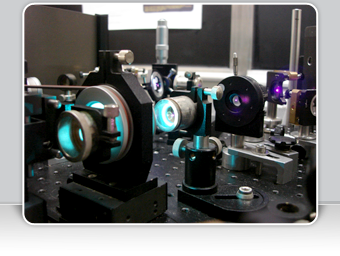« Back to all publications
Download this list in a RIS file or a BIB file or a PDF file
|
||||||||
The constructive interference between two Stark-effect-broadened holograms produced by spectral hole burning is discussed. The holograms are burned at the same frequency but at different external electric-field values. The phase difference is selected to be zero so that constructive interference between the waves diffracted by each grating occurs. Experimentally it is found that a dip in the hologram efficiency that is not predicted by previous theory occurs for all reconstruction external electric-field values in the region between the original burn values. This dip is interpreted as being due to the time nonlinearity of the hologram burn process. The dip corresponds to those molecules, oriented in a specific direction with respect to the electric field, for which no Stark shift occurs and that are therefore resonant with the laser during the production of both holograms. The width of the anomalous feature is close to that of the hologram when the hologram is reconstructed at the original burn external electric-field strength. Other molecular orientations may be selected by burning pairs of holographic gratings at other combinations of the frequency and the electric field. | ||||||||
|
||||||||
The electron transfer reaction between 9,lO-anthraquinone (AQ) excited to the lower triplet state and 1,2,4trimethoxybenzene (TMB) in solvents of different polarity has been studied by nanosecond time-resolved resonance Raman spectroscopy. In no solvent was there evidence for the formation of a triplet exciplex. All the observed vibrations were characterized as AQ* or TMB" modes. The frequency of the band assigned to the C-C stretch of TMB" has been found to be very dependent upon the environment and this effect has been used to observe the separation of the geminate ion pair into free ions in polar solvents. The data strongly suggest that the ions are at van der Waals contact in the geminate ion pair and not separated by solvent molecules. | ||||||||
Download this list in a RIS file or a BIB file or a PDF file
Contact:
Eric Vauthey
Physical Chemistry Department - Sciences II - University of Geneva
30, Quai Ernest Ansermet - CH-1211 Geneva 4 (Switzerland)
© All rights reserved by Eric Vauthey and the University of Geneva
Design and code by Guillaume Duvanel




